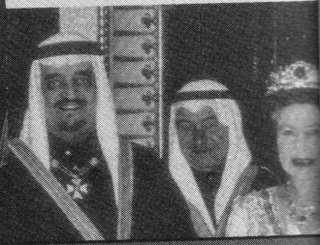by salafytobat
Wahhabism: A Critical Essay
- Wahhabism, a peculiar interpretation of Islamic doctrine and practice that first arose in mid-18th century Arabia, is sometimes regarded as simply an extreme or uncompromising form of Sunni Islam. This is incorrect, for at the very outset the movement was stigmatized as aberrant by the leading Sunni scholars of the day, because it rejected many of the traditional beliefs and practices of Sunni Islam and declared permissible warfare against all Muslims that disputed Wahhabi teaching.
Pada mukasurat 3, tertulis:-
- It has, however, been observed by knowledgeable Sunnis since the earliest times that the Wahhabis do not count as part of the Ahl al-Sunna wa al-Jama`a, for almost all the practices, traditions and beliefs denounced by Muhammad b. ‘Abd al-Wahhab have been historically integral to Sunni Islam, enshrined in a vast body of literature and accepted by the great majority of Muslims. Precisely for that reason, many of the ‘ulama contemporary with the first emergence of Wahhabism denounced its followers as standing outside the pale of Ahl al-Sunna wa al-Jama`a. That Wahhabis are now counted as Sunni is one indication that the term “Sunni” has come to acquire an extraordinarily loose meaning, not extending much beyond recognition of the legitimacy of the first four caliphs (regarded by Sunnis as the Khulafa al-Rashidun ["the Rightly Guided Caliphs"]; in fact, it signifies little more than “non-Shi`i”. Our characterization of Wahhabis as non-Sunni is therefore above all a historical clarification; it has in itself no polemical purpose, if only because for the present writer Sunnism is but one representation and interpretation of Islam.
Adakah Wahhabi tergolong dalam kumpulan majoriti Ahlus Sunnah wal Jama`ah mazhab 4 ? Sila dapatkan buku tersebut dan baca kandungannya dengan teliti. Dr. Hamid Algar seorang berbangsa Inggeris yang lahir di England pada tahun 1940 dan memeluk agama Islam. Lulusan doktor falsafah dalam pengajian Islam daripada Universiti Cambridge dan menguasai bahasa-bahasa ‘Arab, Parsi dan Turki. Kini menjadi pensyarah di Universiti California, Berkeley.
‘Sir’ Fahd – Dapat Penghargaan Inggeris dan BERKALUNG SALIB
Mungkin ramai yang tidak mengetahui yang Kerajaan Arab Saudi berhutang budi dan “body” serta nyawa dengan Empayar British. Ini adalah kerana “berkat” kerjasama dan bantuan Britishlah, maka tertubuhnya Kerajaan Arab Saudi mengikut sunnah Great Britain bersendikan ajaran Wahhabiyyah. Pemimpin-pemimpin Saudi merupakan “loyal servants” bagi Empayar British, dahulu dan sehingga kini, dan kini ditambah pula jadi khadam Amerika dan sekutunya, Bahkan Raja Abdul Aziz menerima gaji bulanan berjumlah 5,000 paun sterling daripada British mulai tahun 1917. Selain daripada itu, Kerajaan British telah menganugerahkan “knighthood” kepada Raja Abdul Aziz, bahkan Raja Fahd pun dapat anugerah tersebut.
Walau apa pun Raja Fahd dah pergi menemui Penciptanya, tetapi kebenaran harus dan perlu diketahui ramai. Hansome tak Fahd dengan berkalungkan pingat salibiyyah di lehernya ? Apa pulak fatwa ulama Wahhabi , kalau orang pakai azimat tentu mereka terus tuduh kafir dan syirik. Kalau pakai salib, nak kata apa ? Kalau tuan-tuan dan puan-puan nak tengok lagi gambar warna kesegakan Raja Fahd dengan pingat kebesarannya boleh carilah buku “Custodian of the Two Holy Mosques King Fahd bin Abdul Aziz”, Guernsey, Channel Islands, 2001, p. 214, karya Dr. Fouad al-Farsy.
Berikut petikan dari buku Dr. Hamid Algar “Wahhabism: A Critical Essay”, mukasurat 38 – 39:-
- The first contact was made in 1865, and British subsidies started to flow into the coffers of the Saudi family, in ever growing quantity as World War One grew closer. The relationship fully matured during that war. In 1915, the British signed with the Saudi Ruler of the day, ‘Abd al-’Aziz b. Sa`ud (Ibn Sa`ud), one of those contracts with their underlings that were euphemistically known as “treaties of friendship and cooperation”. Money was, of course, the principal lubricant of friendship and cooperation, and by 1917 the Saudi ruler was receiving five thousand (5,000) pounds a month, not a bad sum for a junior hireling of the British Empire. However, the British also graciously saw fit to confer a knighthood on the champion of Wahhabism. (In later years these formalities continued to be observed; in 1935, ‘Abd al-’Aziz b. Sa`ud was made a Knight of the Order of the Bath. Likewise, when visiting Queen Elizabeth in 1986, King Fahd, “Custodian of the Two Holy Mosques,” was photographed with the cruciform insignia of a British knightly order hanging round his neck.)
Allahummashuril Islam wal Muslimin bijaahi Sayyidil Mursalin.


No comments:
Post a Comment